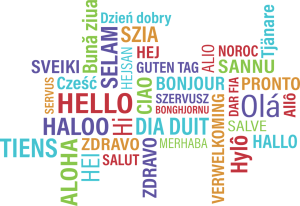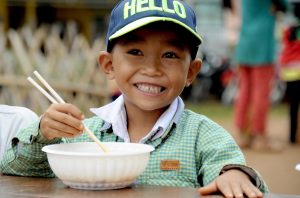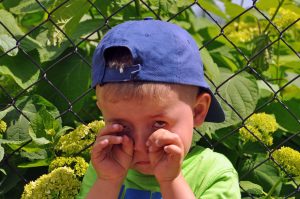General Development
In this section you will find posts that explore aspects of development that span across many ages, with topics such as intelligence, personality, conditions that support development and many others.
What is Developmental Science?
“Developmental Science” is an exciting and very dynamic multidisciplinary field that seeks to understand and explain human development in its many aspects and the vast number of factors that affect it. Both individual (ontogenetic) and, to a somewhat lesser extent, evolutionary development are considered. It centers on developmental psychology and cognitive neuroscience but scholars working in the field may also have expertise in biology, brain science, linguistics, anthropology, primatology, positive psychology, or other areas. There is considerable collaboration among researchers with varied backgrounds who draw on multiple research methods to examine issues. Human Development is regarded as a complex adaptive system, that is ever in transition. Many, but not all, developmental scientists have both theoretical and applied interests.
What is Positive Psychology?
From its inception, psychology has sought to explain human thinking and behavior, as well as to describe basic development. But it has traditionally focused on struggles and challenges, on disorders, and on those who have failed to thrive. Then, just about the time the 21st century was dawning, a small number of psychologists realized that the field itself had failed in a way, because it had not seriously considered why some people thrive. Psychologist Martin Seligman is sometimes regarded as the “founder” of the positive psychology because he articulated the issue in his now famous keynote address at the annual meeting of the American Psychological Association (APA) in 1998. Like a damn bursting open, a growing number of researchers began seriously investigating the positive experiences of people.
Positive psychology is the study of the strengths that enable people to thrive. It is often described as the scientific study of what makes life worth living. It focuses on positive experiences such as happiness and flow, and positive traits such as resilience, gratitude and compassion.
There is a core belief among positive psychologists that people want to be happy, want to have a sense of well-being, and that they want to flourish. From its beginnings, positive psychology has had a strong commitment to both theory and application, seeking to explain positivity and to find ways to help people build positive qualities through practices, coaching, teaching and other support.
Many leading Universities and organizations are committed to disseminating this information. Here are some resources you may want to explore to learn more about enhancing your own, or your child’s, positivity:
The Greater Good Science Foundation at U C Berkeley: https://greatergood.berkeley.edu
The Positive Psychology Center at the University of Pennsylvania: https://ppc.sas.upenn.edu
The Positive Psychology Program https://positivepsychologyprogram.com/category/positive-psychology-articles/
Play is not pointless fun.
For all people, but crucially for children, play profoundly supports and promotes social and emotional skills, self regulation, language and thinking. Most parents easily see that playing with others can help children learn to do things like interact, share and generally get on with others. It fairly obviously encourages children to use language to share ideas, negotiate and cooperate. From there it’s a small leap to see that play can help children learn to regulate their behavior, as when they must wait their turn or inhibit an impulse to be selfish or inconsiderate. Another . . .
Anna and Ellen are sisters, 1 1/2 years apart in age, octogenarians when I talked with them. Anna’s favorite childhood game was “playing house.” She loved it and delightedly remembers spending hours with her sister playing with their dolls in the little room they set up to resemble a home. It was filled with all sorts of playhouse props — small furniture, clothing and household items. Anna’s face beamed with joy as she recalled these times, her eyes glowing and her face . . .
Introduction
Understanding two languages, and often two cultures, gives bilinguals a broader perception of people and society: they are inherently more socially open and flexible and have a deep understanding that people do not always think alike. Alongside this practical advantage lies a neuro-cognitive one. Numerous studies have shown that bilinguals surpass monolinguals in cognitive skills such as executive function, creative problem solving, and metacognition (the ability to think about thinking).
Psychologists haven’t always seen bilingualism as providing social and cognitive benefits . . .
Introduction
(This section provides background information about language learning, skip a few paragraphs to “How children become bilingual,” if you wish)
 There is a small window of time in which a person can truly become a fluent native speaker of a language, and that is during childhood. Native speaker fluency means acquiring a language through natural exposure, being able to make subtle grammatical judgments about the language, being able to express ideas in the language in many ways, and being able to say and use all of the sounds of the language. The time when we can learn to do this is roughly from infancy until puberty. Developmentalists continue to explore the reasons for this age constraint, but they mainly have to do with the young brain and its flexibility, the areas of the brain that participate in early language learning, and what the brain has already learned that may interfere with or influence later learning.
There is a small window of time in which a person can truly become a fluent native speaker of a language, and that is during childhood. Native speaker fluency means acquiring a language through natural exposure, being able to make subtle grammatical judgments about the language, being able to express ideas in the language in many ways, and being able to say and use all of the sounds of the language. The time when we can learn to do this is roughly from infancy until puberty. Developmentalists continue to explore the reasons for this age constraint, but they mainly have to do with the young brain and its flexibility, the areas of the brain that participate in early language learning, and what the brain has already learned that may interfere with or influence later learning.
Can adults become fluent in another language? Yes. Adults can certainly learn to speak a new language very well. Yet even those who use it daily rarely achieve full native speaker fluency. One bit of evidence is the tiny “accent” we hear in fluent speakers of our language who are not actually native speakers. The language learning process itself is different for adults. Typically, adults consciously learn rules for a language, memorizing and practicing them, even when they live in a foreign country.
Children acquire language unconsciously. If you listen, you’ll notice they practice and experiment, but we never sit down and teach our children. Did you ever teach your 2-year-old the verb TO BE? Did you go over the differences between using is, be, being, been? Think about it. Of course you didn’t. And your child would have hated it if you had (and would not have understood you and you don’t really consciously know the rules anyway!).
There’s another big difference. When children learn their first language (or languages), they are learning concepts at the same time that they learn words. For example, learning names for numbers also involves learning to count and learning about numbers. For many concepts, adults are translating what they already know into new words, though some ways of viewing and understanding the world vary across cultures opening the way to new ideas along with new words for adult language learners. Learning language and learning about the world are very connected for children.
As a parent, you don’t teach language; you interact with your child. For the most part your child figures it out. We do help though. Adults use simple language with small children, then talk in increasingly complicated ways as children become more competent. This attuned accommodation is the main way we help children learn a language.
It works because the human brain is “language expectant.” That means it expects to be exposed to language during infancy and early childhood and is able to notice and create rules for how language works. One of the great challenges in Artificial Intelligence is trying to figure how to get computers to do this, to come up with accurate rules based on the data they receive. (We’re only just beginning to unravel this in fields like AI and computational linguistics.)
Language itself is a great gift and one of the key abilities that distinguishes humans. Bilingualism is an extra gift that confers some lifelong cognitive and social advantages.
This article explains ways children become bilingual and what to expect if your child is being reared bilingually. Part 2 describes some of the interesting benefits of bilingualism.
Bilingualism defined
Bilingualism simply means having native speaker fluency in two languages. (Trilingualism is the same with three languages.)
How children become bilingual
 Native speaker knowledge of a language happens when children interact with others who are themselves native speakers of that language.
Native speaker knowledge of a language happens when children interact with others who are themselves native speakers of that language.
♥ Learning a language requires a lot of exposure to the language. The key to bilingualism is having enough natural exposure to both languages. TV and screen time do not count! There is a huge amount of research confirming that children cannot and do not learn language from screens. Language learning requires interaction in natural settings with lots of opportunities for the learner to speak and have real, meaningful conversations. (For more on how conversational interactions support brain and cognitive development check out this review of research on boosting brain development)
Bilingual children learn from interacting with native speakers of each of the languages they are acquiring.
The main kinds of bilingual exposure
* Parents are native speakers of different languages
A child whose father is a native speaker of English and whose mother is a native speaker of Mandarin Chinese will learn both English and Mandarin so long as each parent speaks often to the child in their native language. Experts often recommend one parent/one language in bilingual families and this tends to be effective. But some families mix up the languages and speakers when one or both parents are fluent in both languages. It’s okay to experiment and see what works in your home.
* The child has a caregiver who is a native speaker of another language
A child whose nanny, au pair, or grandparents speak Spanish or Korean or whatever with the child, while his own parents speak mainly English, may learn both languages. This is especially true if the child has cousins or friends who speak the other language or if the child has a chance to go to school, even Saturday language school, where the other language is used.
* Living in another country or culture
 A child of English speaking parents living in a country that uses another language can acquire English at home and the other language in the community, interacting with other children, shop keepers, and in schools or early child care where the language of the country is spoken.
A child of English speaking parents living in a country that uses another language can acquire English at home and the other language in the community, interacting with other children, shop keepers, and in schools or early child care where the language of the country is spoken.
* Immersion school or bilingual schools
Some communities in the United States offer schools in which two languages are used, for example both English and Spanish, or in which only a language other than English is used throughout the school day. When these schools provide native speaking teachers and truly use the other language for all subjects and experiences throughout the day (or on alternating days) many children become fluent.
What to expect if your child is learning two languages at once
* Later language Young children learning two languages simultaneously will likely begin to say words a few months later than monolingual children and will likely take a little longer before they combine words into 2- or 3-word phrases.
* Language Mixing Young children may produce phrases that use words from both languages. For example, a child learning both Spanish and English might say “More agua” (‘more water’) or “No es a dog” (‘It isn’t a dog’)
* Smaller vocabularies Bilingual children typically have smaller vocabularies than monolingual children, at least for a few years. On the other hand, they actually know many words; it’s just spread across the two languages since time and brain space are divided across two codes.
* Different language with different people Children may speak mainly English with one parent and mainly the other language with the other parent. This is actually rather useful for the child since it can help her keep the languages separate – English with Daddy, Chinese with mommy. Some children speak English with both parents and the other language with just one parent, the one who is really fluent in it.
A child who is learning a language at home that is different from the one spoken in his community may be very surprised if he meets someone else who knows the home language. They may be delighted or they may be unhappy that someone else knows their “special” language.
* Unequal skill The child’s competence probably won’t be equal in the two languages. One may be stronger than the other. Ultimately, the child who is bilingual really does become competent in both, though one may always be stronger than the other.
* Different language in different situations Children may use the different languages in different situations, for example using Italian for food and family gatherings, and using English on the playground with the same family and friends.
* Being silent in a new language environment A child who moves to a new country and goes to a pre-school or elementary school that uses a “foreign” language may be very silent for a number of months – often about 6 months, then will begin to use the new language with classmates and in school. If these children have the opportunity to stay in the community for several years, they are likely to gain the same fluency as their classmates.
* Mixing languages later on Children who speak one language at home and learn another at school may start to mix up their home language with the school language. For example, a child who speaks Spanish at home and learns English at school may start mixing English into Spanish at home. Don’t worry, the child isn’t confused and they know the difference between the two languages. Adult bilinguals mix their languages too, it’s just part of their fluency and flexibility. Mixing doesn’t mean confusion.
* Near bilingualism When exposure to the two languages is unequal, the child will likely gain real native speaker fluency in one language and near fluency in the other.
The Gift of Bilingualism part 2 explores the effects of bilingualism on cognitive and social development. You can read it here.
Emotions are complex phenomena
Emotions involve a subjective reaction to something in the environment and we experience them as either pleasant or unpleasant. It’s pleasant to feel happy or interested, but not so nice to feel frightened or angry. There is more than a century and a half of research in a number of fields seeking to understand what goes into an emotion and how they serve us.
Most scientists agree that emotions have these four components.
* Positive or negative feelings
* Physiological responses, such as changes in heart rate or respiration, sweating (more formally known as a galvanic skin response), secretion of neurochemicals that are associated with things like calmness or flight, and changes in brain waves.
* Cognitive responses (mental thinking) that cause the emotion in the first place or that accompany it
* Goals, such as communicating our needs, influencing the behavior of others, avoiding unpleasant experiences or obtaining pleasant ones.
This tells us that emotions are a lot more than “feeling” one way or another. They have an important social function and help us have the kinds of experiences in the world we want to have.
Consider a very basic emotion a tiny infant may have: distress. Imagine a baby finding himself lying on some sharp-edged toy or feeling pain. The baby has a physiological response — accelerated heart beat and respiration. His crying is biologically triggered, but it serves the function of drawing attention, communicating his distress to others and thus getting an unpleasant experience fixed. Similar reactions occur in older children and adults, but with maturity, emotions get much more complex and we learn to regulate them. We also learn to interpret the emotions of others from their facial expressions and other clues, but it takes a surprisingly long time to get really accurate at interpreting these signals. (Teens are not very good at it yet!)
on some sharp-edged toy or feeling pain. The baby has a physiological response — accelerated heart beat and respiration. His crying is biologically triggered, but it serves the function of drawing attention, communicating his distress to others and thus getting an unpleasant experience fixed. Similar reactions occur in older children and adults, but with maturity, emotions get much more complex and we learn to regulate them. We also learn to interpret the emotions of others from their facial expressions and other clues, but it takes a surprisingly long time to get really accurate at interpreting these signals. (Teens are not very good at it yet!)
Why Emotions are important
* Emotions have a variety of functions. Clearly they let others know how we feel, and they can help us respond effectively to situations.
* Emotions are linked to social success. The ability to interpret the emotions of others and respond appropriately is central to good social relationships. So is the ability to express our own feelings in ways that are socially appropriate. This is often called having “emotional intelligence,” and it’s very clear that having a high “EQ” is just about as important than having a high “IQ.”
* Emotions are linked to overall mental and physical health. Depression, sadness and despondency are tied to emotions. Overall, individuals with a lot of negative feelings are much less heathy than those with more positive feelings. It’s measurable in things like stress levels, cortisol, blood pressure, vagal tone and many other markers, as well as in psychological measures. Children reared in environments with negative emotions are likely to experience stress, have trouble concentrating and may withdraw from social situations. They also have lower self esteem and less self confidence. Adults have similar reactions.
* Memories of past emotional responses help shape how people react in the future. For example, those who are successful when they make a social overture, recall the positive feeling and feel good about approaching others, They become more confident and connected. Those who are unsuccessful or rejected when they make a social overture, remember the unpleasant feelings and may become wary or withdrawn. They feel less confident and less connected.
Primary and Secondary Emotions
Primary emotions emerge during infancy, some within the first few weeks after birth and some closer to 6 or 7 months. You can read about them HERE.
Secondary Emotions require some thinking and self reflection and emerge during early childhood.  Young children also begin to control or “regulate” the way the express emotions, learning what is appropriate and what is not in their society. You can find out more HERE.
Young children also begin to control or “regulate” the way the express emotions, learning what is appropriate and what is not in their society. You can find out more HERE.
In the section of teens, we discuss some late emerging skills, including interpreting emotions.
We’ll soon post another article explaining new ideas about how adults can consciously enhance their sense of emotional well-being.
Background
The idea of attachment emerged in the 1930s and 1940s when British psychotherapist John Bowlby began to study the behavior of young children who were separated from their parents.
He observed children in two situations: little children who were hospitalized for extended periods and little children who were sent away temporarily by their families from Spain to England, for protection during the Spanish Civil War. At the time, hospital stays were much longer than they are today and parents were generally excluded, so children who were ill or undergoing surgeries might not see their families for several weeks.
What Bowlby observed over and over during these stressful separations was a characteristic progression in the behavior of the little children:
1. A Protest phase, in which children try to regain Mother by crying, calling out and asking for her
2. A Despair Phase, in which children loose hope, often becoming apathetic
3. A Detachment phase, in which children seem to recover and engage with toys and people, but are cool or indifferent to their mother when the two are re-united.
Bowlby suggested that children become attached to their mothers and regard them as a secure base, from which they can venture into the world, safe in knowing that they can return for comfort and protection when needed. When this security disappears, children become traumatized, but eventually find courage to interact with people and things on their own. The trauma resolves into a sense of loss and mistrust. Bowlby suggested that this leads to rejection or indifference for the person whom they can no longer trust.
Ideas about why children become attached
Numerous therapists and developmentalists offered explanations for how children become attached in the first place.
Freud proposed it was oral gratification, in which an infant becomes attached to the breast and then extends this to the mother. One obvious challenge for this view is that children can become attached to someone who is not the person feeding them.
Erikson suggested that, while feeding may be involved, the mother’s general responsiveness to her infants needs is more important and creates a basis for resolving what he called the first conflict of development, coming to trust or mistrust others.
Harlow famously demonstrated that comfort is more important than nourishment, when he placed infant monkeys in a setting where they where fed by a larger wire monkey with a nipple and bottle and also had access to a soft cloth covered wire monkey. When the infant monkeys were startled or frightened, they ran to the cloth “mother” and clung to her. Comfort was deemed the crucial factor in attachment.
This is a clip of original footage from the famous Harlow experiment.
The Quality of Children’s Attachments to their Mothers (or other primary caregiver)
At 12 months children are usually attached
By the time they are a year old, almost all children are attached to their primary caregiver. This means they have a particular connection to one special person and uses him or her as a base, someone they can return to when needed and someone who makes them feel more confident about exploring the world. Once they are attached to one person, children often become attached to one or more other people who are important in daily life.
What varies among children is the quality of their attachment.
Most children (about 60 – 65% of children in the USA) seem to be securely attached and comfortable in their relationships, while others seem much less secure. These insecurities take various forms. Some show ambivalence, wanting to be near the person they are attached to, but also showing anger or resistance. Others are avoidant, showing little concern if mother leaves and ignoring their mother after the two have been separated. A few children (perhaps 5% or less), show very disorganized patterns of attachment, often the result of abuse. You can read a full description of these patterns in the article on the development of attachment during infancy, part 2.
Adult Attachments
Work on Attachment began with studies of children and for many years focussed almost exclusively on the relationship between young children and their mothers or other important caregivers. More recently, we have extended ideas about attachment into the whole lifespan.
One realization that lead to this is that older children, those in high school, college and even adulthood, often maintain a feeling of attachment to their parents. If you have a child at University, you may be happily touched by how your emerging adult may call for advice or comfort, longs for you if they become ill, wistfully thinks of coming home for a minor holiday, or wants to share joys and successes. As an adult yourself, perhaps you’ve been glad to call a parent for advice or just to connect and share. Those are examples of attachment.
Increasingly we realize attachment isn’t just between parent and child.
Partners are also very close attachment objects. Most people experience secure relationships as empowering. In a very real sense, a partner can act as a secure base from which we can confidently engage in the greater world, feeling a sense that connection and support are always there for us. At its best, we may feel that we like the reflection of ourself we see in the eyes of our partner, while at the same time feeling confident in our own sense of self. It is appreciating the love beamed at us, and also feeling a strong sense of self esteem and self confidence. One of the gifts of a great relationship is that partners provide a base and support for one another. Yet, as with children, not all adult partnership are secure. Sometimes there is ambivalence or caution or clinging. These are all indications of insecure attachment patterns that are remarkably parallel to the kinds of patterns seen in children.
♥ A good way to think about styles of attachment is to see them as the way people adapt to important relationships. Attachment comes from a deep need to be connected to special people and to draw strength from that connection. The quality of attachment turns largely on the experiences a person has in close relationships.
Whether you are the parent of a young child or a teenager, you may also want to read the article on infant attachment, since it gives a more complete description of the main patterns of attachment and how they are assessed. (The link is above)
An upcoming article in adult development will describe adult attachment styles in fuller detail.
Forming an identity is a process that extends throughout childhood and adolescence. In fact, it continues throughout life as we add new roles, drop former roles, and grow in skill and experience. The process begins in early childhood, after toddlers come to recognize themselves in mirrors and photos, grasping a sense of, “That’s me.”
Identity is a construction. Children build or construct a sense of self. It is not something that is given by biology, defined by temperament or taught by others. It is created by each individual and it is both a cognitive and social construction.
Cognitively, a sense of self involves mental representations. Each individual comes to distinguish between a real and ideal view of him or herself. We evaluate the self across different situations and different kinds of experiences and eventually comes to create and integrate multiple aspects of the self.
Socially, each individual observes the behavior and reactions of others, learning culturally and socially valued roles and ways of being. A sense of self comes in part through interactions with family, friends, teachers, peers and others. Conversations and narratives — the stories we humans tell that help interpret our daily life — provide a framework for self creation. In addition, the opinions and reactions of others influence a child’s self concept. Gradually these views and opinions become internalized, both negative interpretations (judgements, being punished or reprimanded or criticized) and positive ones (being respected or admired, experiencing warm, accepting and nurturing views).
A full sense of self involves multiple components.
Self recognition: being able to recognize or identify oneself
Individual self: those aspects of self that make a person unique
Relational self: aspects of self that involve connections to others and interpersonal relationships
Collective self: an individual’s concept of him- or herself within a group, including such things as gender, race, ethnicity and religion.
The sense of self and what it includes evolves in a fairly consistent way during childhood and adolescence, beginning with concrete qualities (I’m a girl, I’m strong, I have a brother), then including a sense of more internal subjective qualities (I’m thoughtful, I’m determined). It gradually moves to an awareness of how some aspects of self shift depending on context and comes to include one’s values and sense of self esteem. Teens and emerging adults often actively explore different possible identities, sometimes trying out different ways of being and considering various goals, careers, political views and roles before they settle on a mature identity.
From that mature base, we continue to grow, responding to experiences, taking on new roles (such as becoming a parent), relinquishing roles (as when one is no longer a student, or when one looses a spouse through divorce or death), building emotional intelligence, and sometimes even consciously cultivating qualities such as openness or patience or resilience.
For centuries, millennia even, people have debated whether human intelligence and behavior are the product of our biology or our experiences. The grand philosophical roots of this question are captured in the distinction between Descartes’ famous “erased slate” (tabula rasa), which argued that children are born with no knowledge, that they are empty slates, such that everything they are and do is learned; and Rousseau who described children as noble savages, born with basic knowledge and goodness that becomes misdirected by society. A very common view was that children are preformed miniature adults.
The argument was alive and well in the 20th-century. In mid-century, the famous behaviorist, B. F. Skinner, boasted that he could train any newborn to become anything wished — a surgeon, an artist, or whatever. Experience reigned supreme. A couple of decades later, data from twin studies began to come in and revealed some surprising similarities among identical twins who had been reared separately. The pendulum swung from nurture to nature. By the end of the century there was a greater sense that both were important and the heritability coefficient was introduced. It is a statistical technique for calculating the amount of a feature, such as height or intelligence or sociability, that can be attributed to heredity and the amount due to experiences. With the exception of a few physical characteristics such as height, heredity is generally thought to account for 50% or less of a feature. The range for different personality traits is 25 – 46 % (Pervin, 2003)
So when the new millennium opened, the nature ~ nurture question had resolved to something of a balance between the two. But now, even that seems simplistic. One reason has to do with the human genome.
Before the human genome was mapped in 2000, scientists believed there were about 100,000 human genes, each responsible for a single feature or trait. The stunning discovery is that we have less than 25,000 genes. Each gene produces a number of different proteins in response to signals from hormones, other genes, and various cells. Genes produce changes in their environment and the environment triggers changes in a way genes function and the kinds of proteins they produce. This revelation means the the relationship between nature and nurture is a very complex and dynamic one.
In a dynamic relationship the various components mutually influence one another in a continually changing way. That is what dynamic means; the system is in a constant state a flux. This is true at the cellular and all other levels. Very simply, it means that experience actually influences cells and genes, and also that cells and genes influence how each individual responds to experience.
A very important quality of a dynamic system, such as human development, is that the output is not fully predictable. In a simple system the results of an action are known can be predicted. If you add two atoms of oxygen to an atom of hydrogen you get water. That’s a simple system. In a complex system the results of an input depend on a complex interaction among the variables. If you add carbon dioxide to the atmosphere, its effect varies depending on temperature, wind factors, presence of other substances in the atmosphere and how these interact with carbon dioxide and so on.
Human development is an extremely complex dynamic system. What this means for us as parents is that what we do influences our children, but not always in fully predictable ways.
Here’s an example of how individual differences in children affect ways they respond to parents
A simple example illustrates this. The form of a particular gene, DRD4 7-repeat, is associated with attention problems, aggressiveness, and attention deficit hyperactivity disorder (ADHD). Studies show that providing sensitivity training to parents can increase a pre-schooler’s ability to regulate stress, as measured by changes in cortisol among children who carry this DRD4 7-repeat gene form (Bakermans-Kranenburg, et. al. 2008). Yet the measures of cortisol do not change in children without this genetic marker.
What this demonstrates, is that genetics can influence the way children respond to their parent’s actions. Genes are not the only individual variant though. Many other factors can influence how each individual child responds to input.
Research examining the intricate relationships among bio-genetic factors and external influences is still very new. What is clear however, is that it is no longer a question of nature or nurture. Both are extremely powerful and deeply interconnected. Genes provide a set of potentials, which experiences can enhance or diminish or alter. They can also influence how an individual will respond to experiences.
How you can use this information
* What parents do influences their child’s development. Yet, it is not fully predictable how a child will respond.
* Each child brings his or her own qualities, traits, response patterns, gifts and challenges. Each of these alter as the child interacts with the world.
* There is individual variation in how children respond, something parents with more than one child quickly come to recognize.
* Part of a parent’s own development involves changing in response to his or her child.
* Observing, being flexible, and noticing how your child responds to your actions can help you figure out the best ways to support and interact with your child.
* You are important, but you are not responsible for everything.
References
Bakermans-Kranenburg, M. J., Van IJzendoorn, M. H., Pijlman, F. T., Mesman, J., Jufffer, F. (2008). Experimental evidence for differential susceptibility: dopamine D4 receptor polymorphism (DRD4 VNTR) moderates intervention effects on toddlers’ externalizing behavior in a randomized controlled trial. Developmental Psychology, 44, 293-300.
Pervin, L. (2003). The Science of Personality, 2nd Edition. New York: Oxford University Press
